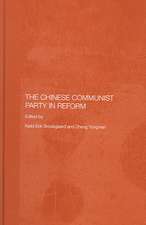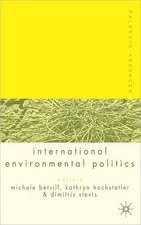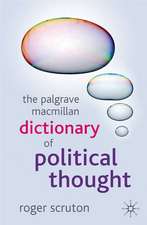Understanding Civil-Military Interaction: Lessons Learned from the Norwegian Model: Military Strategy and Operational Art
Autor Gunhild Hoogensen Gjørven Limba Engleză Hardback – 26 mar 2014
Din seria Military Strategy and Operational Art
-
 Preț: 469.34 lei
Preț: 469.34 lei -
 Preț: 449.41 lei
Preț: 449.41 lei -
 Preț: 397.71 lei
Preț: 397.71 lei - 18%
 Preț: 1011.33 lei
Preț: 1011.33 lei -
 Preț: 469.34 lei
Preț: 469.34 lei -
 Preț: 469.34 lei
Preț: 469.34 lei - 18%
 Preț: 1060.25 lei
Preț: 1060.25 lei - 18%
 Preț: 1059.45 lei
Preț: 1059.45 lei -
 Preț: 420.30 lei
Preț: 420.30 lei - 30%
 Preț: 768.36 lei
Preț: 768.36 lei -
 Preț: 392.54 lei
Preț: 392.54 lei - 17%
 Preț: 257.49 lei
Preț: 257.49 lei - 18%
 Preț: 1109.99 lei
Preț: 1109.99 lei - 28%
 Preț: 848.15 lei
Preț: 848.15 lei -
 Preț: 416.22 lei
Preț: 416.22 lei - 19%
 Preț: 259.54 lei
Preț: 259.54 lei - 18%
 Preț: 844.66 lei
Preț: 844.66 lei -
 Preț: 397.93 lei
Preț: 397.93 lei - 30%
 Preț: 771.32 lei
Preț: 771.32 lei
Preț: 1058.23 lei
Preț vechi: 1290.52 lei
-18% Nou
Puncte Express: 1587
Preț estimativ în valută:
202.52€ • 219.90$ • 170.11£
202.52€ • 219.90$ • 170.11£
Carte tipărită la comandă
Livrare economică 22 aprilie-06 mai
Preluare comenzi: 021 569.72.76
Specificații
ISBN-13: 9781409449669
ISBN-10: 1409449661
Pagini: 224
Ilustrații: Includes 6 b&w illustrations
Dimensiuni: 156 x 234 x 14 mm
Greutate: 0.55 kg
Ediția:New ed
Editura: Taylor & Francis
Colecția Routledge
Seria Military Strategy and Operational Art
Locul publicării:Oxford, United Kingdom
ISBN-10: 1409449661
Pagini: 224
Ilustrații: Includes 6 b&w illustrations
Dimensiuni: 156 x 234 x 14 mm
Greutate: 0.55 kg
Ediția:New ed
Editura: Taylor & Francis
Colecția Routledge
Seria Military Strategy and Operational Art
Locul publicării:Oxford, United Kingdom
Cuprins
Contents: Part I Introduction, Theory, Core Concepts and Actors: Introduction; Theorizing civil-military interaction: security, legitimacy, authority and obligation; Actors in the civil-military relationship. Part II Norwegian Experiences in Civil-Military Interaction: Norwegian humanitarian policy, the Norwegian model and irresponsible idealism; CIMIC: the ’function-that-shall-not-be-named’. Part III Challenges, Lessons-Learned and Recommendations: ’Hearts-and-minds’ and vacuums; The politics of humanitarian space; Why civil-military interaction? Some recommendations; A Norwegian future in civil-military interaction?; Conclusion. Appendix: methods and parameters; Bibliography; Index.
Notă biografică
Gunhild Hoogensen Gjørv is an Associate Professor at the University of Tromsø, Norway.
Recenzii
’Hoogensen Gjørv provides us with a fascinating and detailed insight in the Norwegian practice of civil-military interaction. The many examples and the way the author relates these to theoretical concepts make this book a very interesting read for scholars and practitioners alike.’ Sebastiaan Rietjens, Netherlands Defence Academy, The Netherlands ’Rarely has the civil-military interface been so comprehensively theorised, analyzed and contextualised. This study is grounded in the Norwegian experience in Afghanistan, but its findings and observations will be relevant for all scholars, policy makers and soldiers that are confronted with managing civil-military relationships in complex operations.’ Cedric de Coning, Norwegian Institute of International Affairs, Norway
Descriere
Understanding Civil-Military Interaction provides a novel examination of civil-military interaction in particular between militaries and humanitarian actors, in light of the so-called 'Norwegian model' that espouses a clear divide between political and humanitarian actors (or military and civilian - the model is in fact unclear), while maintaining a tight coordination between them. Using a multi-actor security framework, this book examines whether the Norwegian government is correct in its assumptions about both the model and civil-military knowledge amongst military personnel and concludes that the Norwegian model is a well-meaning but inefficient and problematic model in reality.














